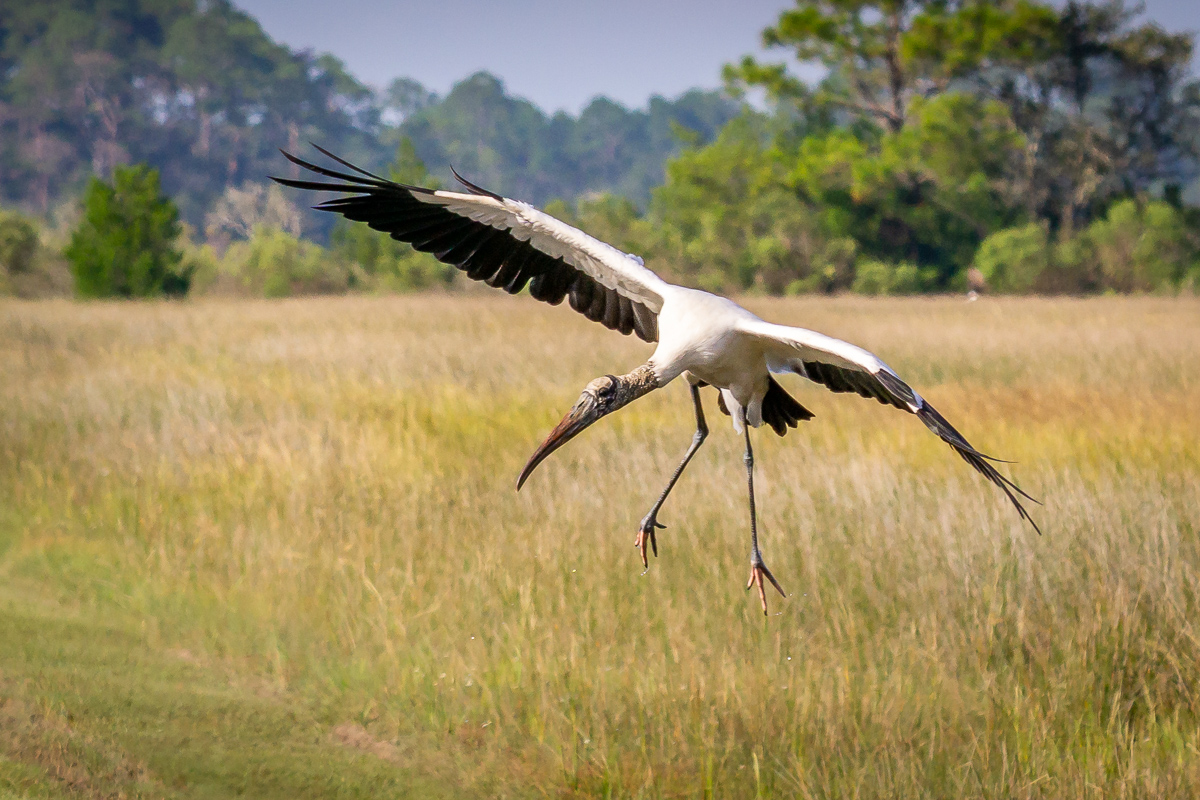
A little over a year ago, I was photographing brown pelicans at St. Marks National Wildlife Refuge. A half mile away, I saw a large bird sitting atop a small, dead tree. Through my lens, it vaguely looked like a stork but I wasn’t sure. I did some research and discovered that wood storks are a threatened species found here in Florida. I’ve been searching for them ever since.
After a somewhat disappointing day of photography at St. Marks last Friday, I had a gut feeling to check a remote part of the refuge near where I have my RV parked. I was pleasantly surprised to discover a flock of around 100 wood storks feeding and settling down for the night. Alongside the wood storks were many great egrets, white ibises and roseate spoonbills.
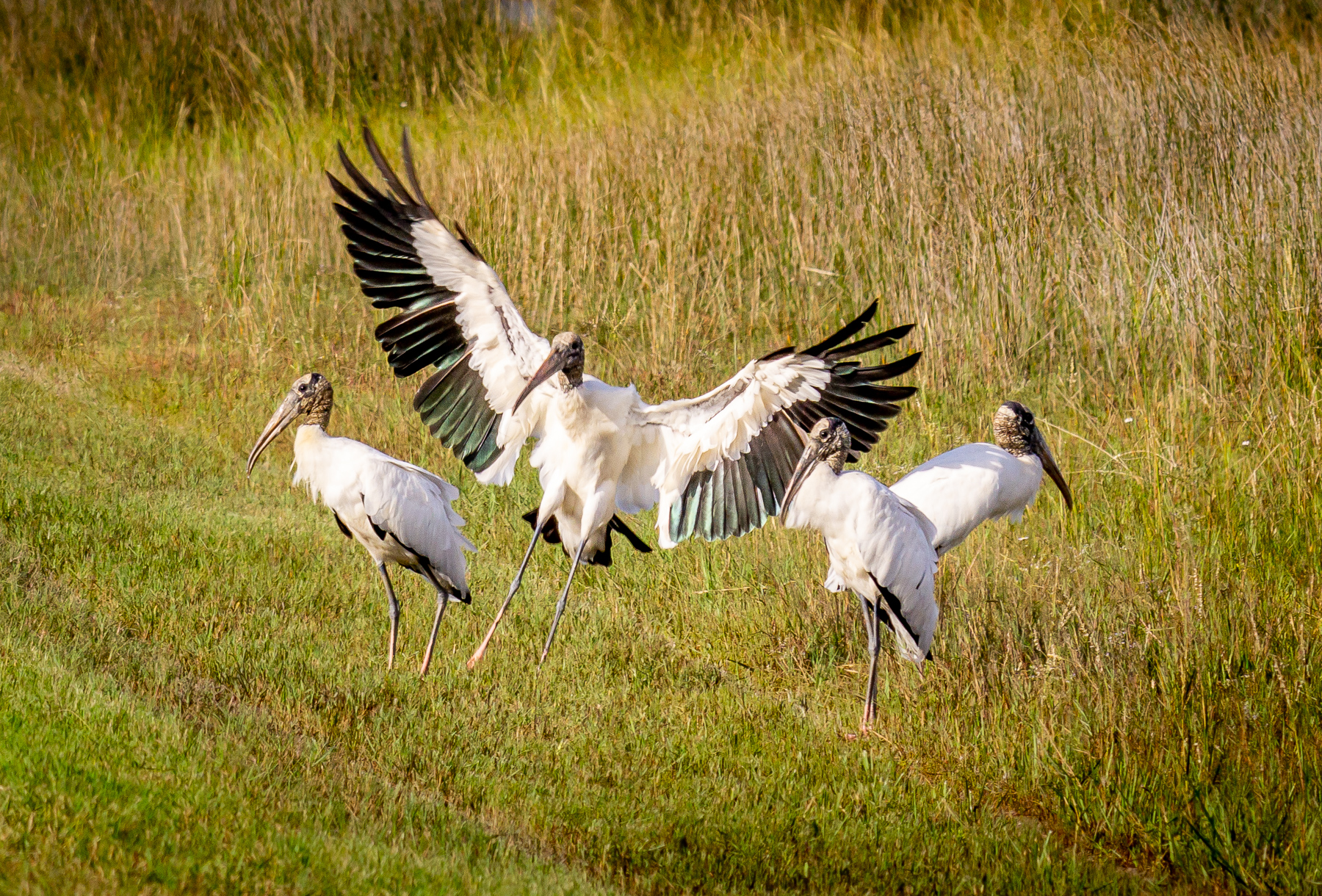
I was using my Sony 200-600mm lens with my Sony A6000 camera attached. The Sony A6000, having an APS-C sensor (cropped sensor), gives me one advantage over my Sony A7ii full-frame camera. It effectively multiplies whatever lens I’m using by a factor of 1.5. So, my Sony 200-600mm lens becomes a 300-900mm lens. Great for photographing skittish wildlife from a distance.
Another reason the Sony A6000 is great for wildlife is that it offers me 11 frames per second (fps) versus five fps offered by the Sony A7ii. Photographing wildlife is very unpredictable, so the faster I can shoot, the better.
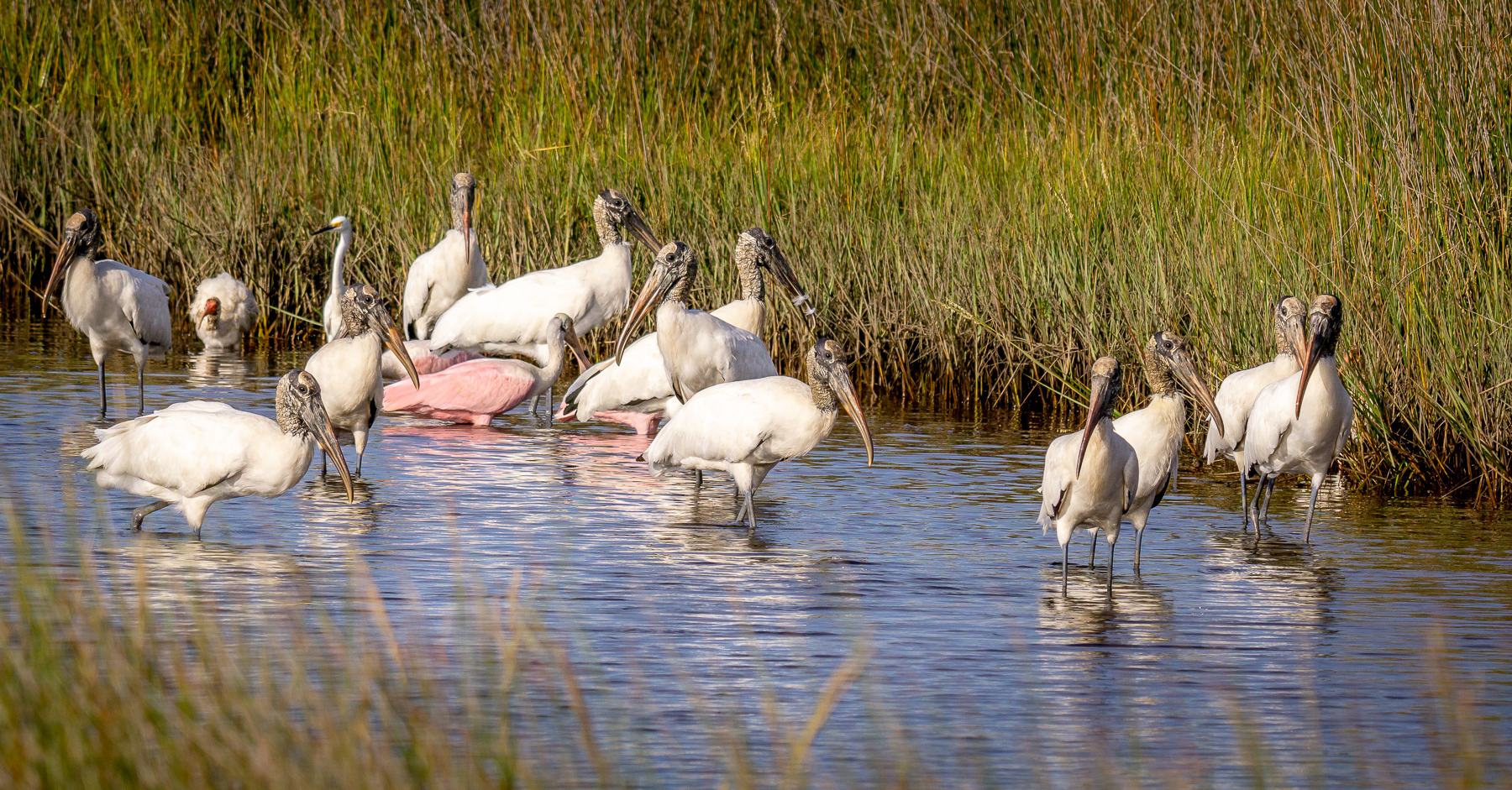
When photographing any subject, I prefer ISO 100 or lower to eliminate any noise in my images. In photographing these wood storks, I had to move my ISO to 400 and accept a tiny bit of noise. It was late in the day and I was shooting with the equivalent of a 900mm lens on my camera making camera shake a very real issue. I needed to keep my shutter speed well above 1/1000th of a second.
For an f/stop, I always go with my widest aperture when photographing wildlife. This allows for the most light into the lens and isolates the subject from the background due to low depth of field. My Sony 200-600mm lens, while good quality at a decent price, has it’s lowest aperture when zoomed at f/6.3. Not the greatest aperture, but I really can’t afford $12,000 for an equivalent lens that gives me f/4.
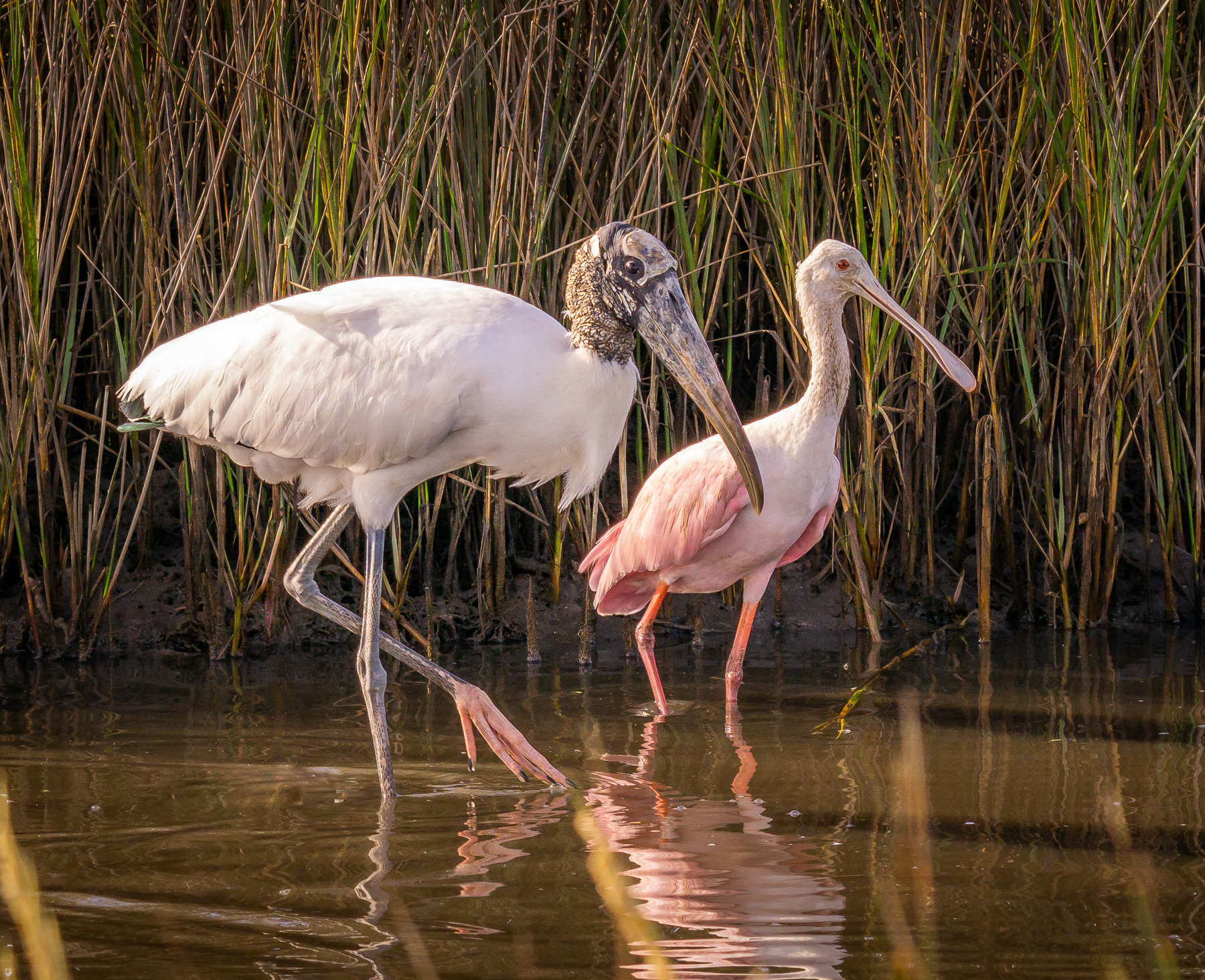
On this particular outing, I was shooting in aperture priority mode and using autofocus set to flexible spot. I typically shoot in manual mode and manual focus. But after searching for wood storks for over a year, I wasn’t sure how long my opportunity to photograph them would last. Using some automation allows to me to do my photography just a little bit faster.
I used my monopod to brace my lens when shooting as much as possible in order to further reduce camera shake. I was in the marsh though and tried to keep my monopod out of the water and mud when I could. When photographing the wood storks in flight, I switched to handheld for easier tracking of the birds in flight.
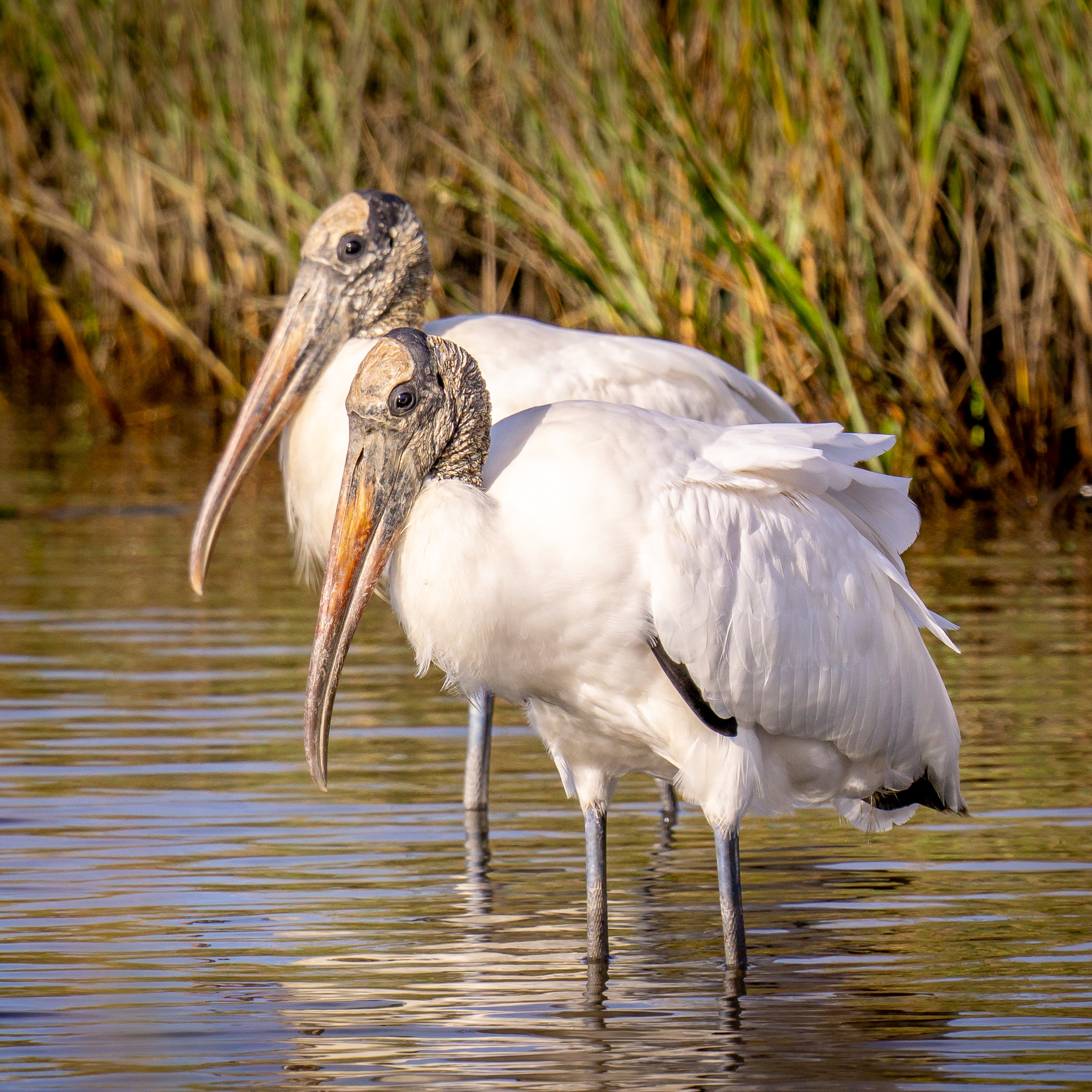
Turns out wood storks are a somewhat calm bird that don’t spook easily. I would say that around 50 feet was their comfort zone. Anything closer and they would start to move away from me. If I held at 50 feet and stayed motionless, they would relax and move toward me.
As a final note, wood storks have a face that only a mother, or another wood stork, could love. It kind of looks like a vulture’s head wearing a beaked mask similar to those worn by medieval plague doctors. Definitely an interesting looking bird.
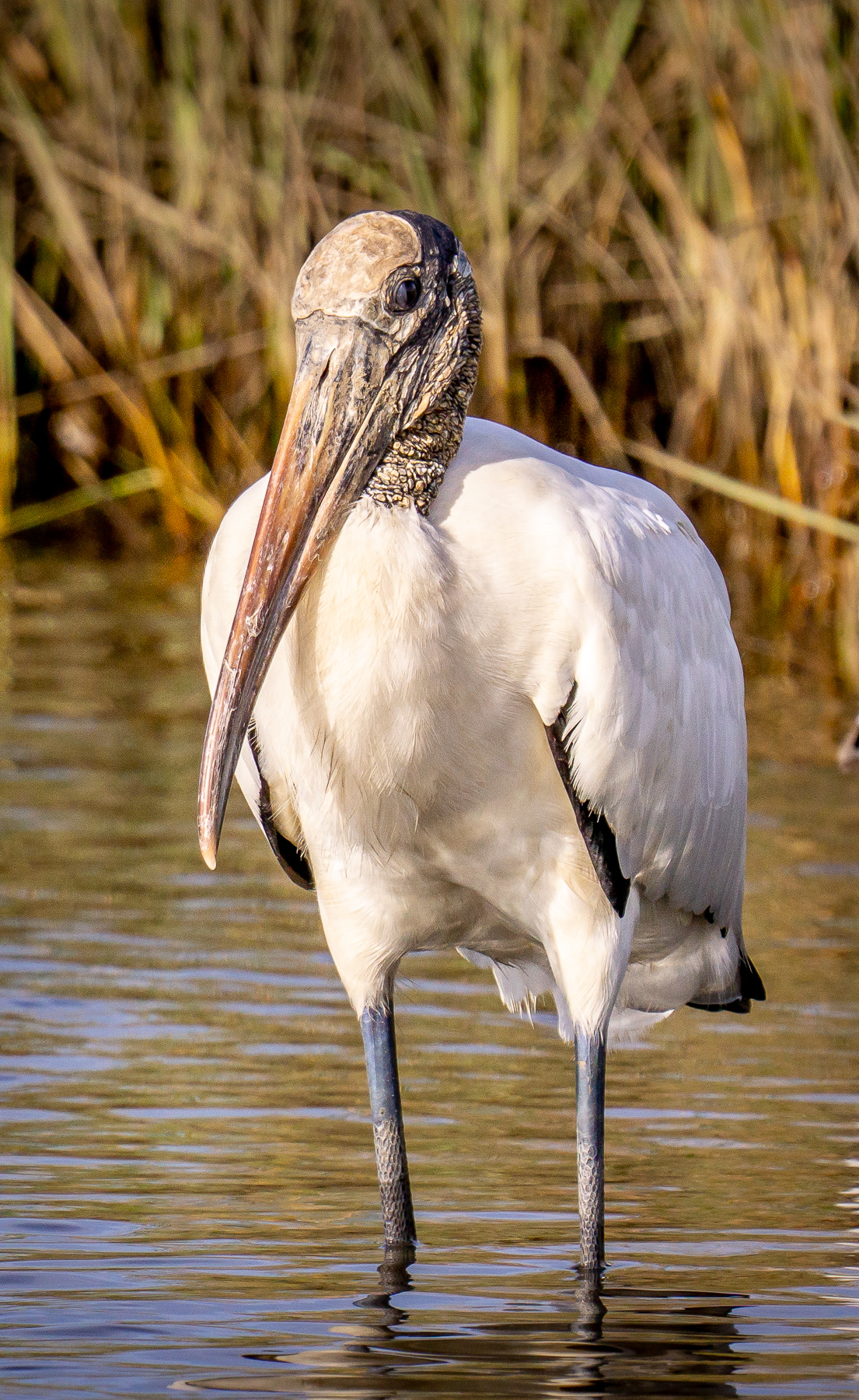
It’s funny where one’s mind goes when writing. I originally started this article to talk about and show the really cool wood storks I photographed here in the Florida Panhandle at St. Marks National Wildlife Refuge. Somehow, the article morphed into my decision making process when photographing these beautifully ugly birds. But that’s alright. If you are a photographer, hopefully you found something valuable in my thinking.
